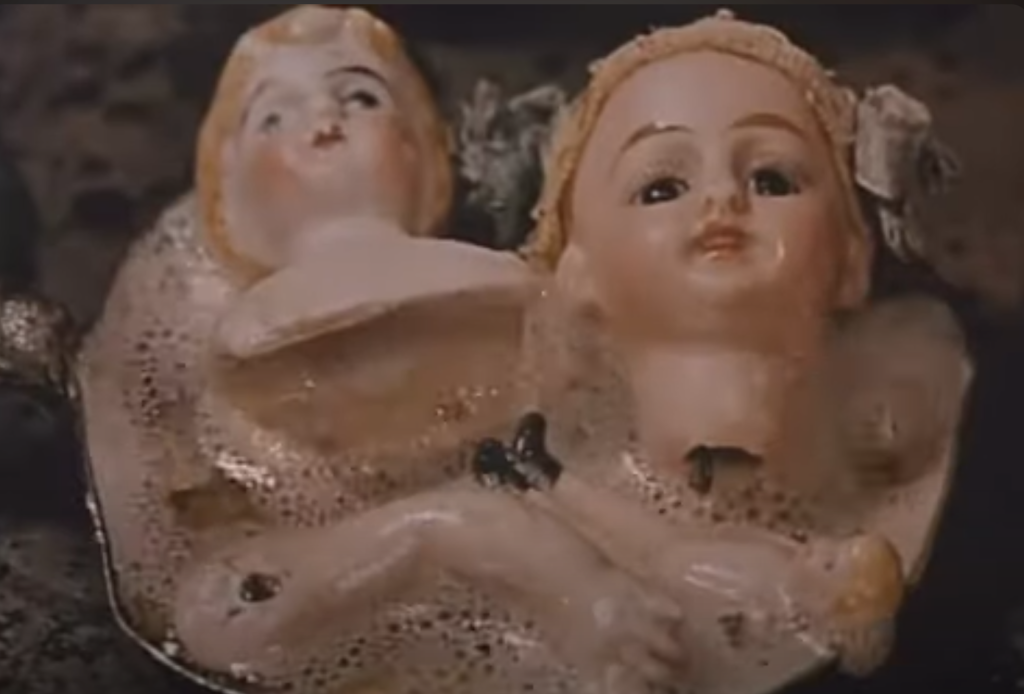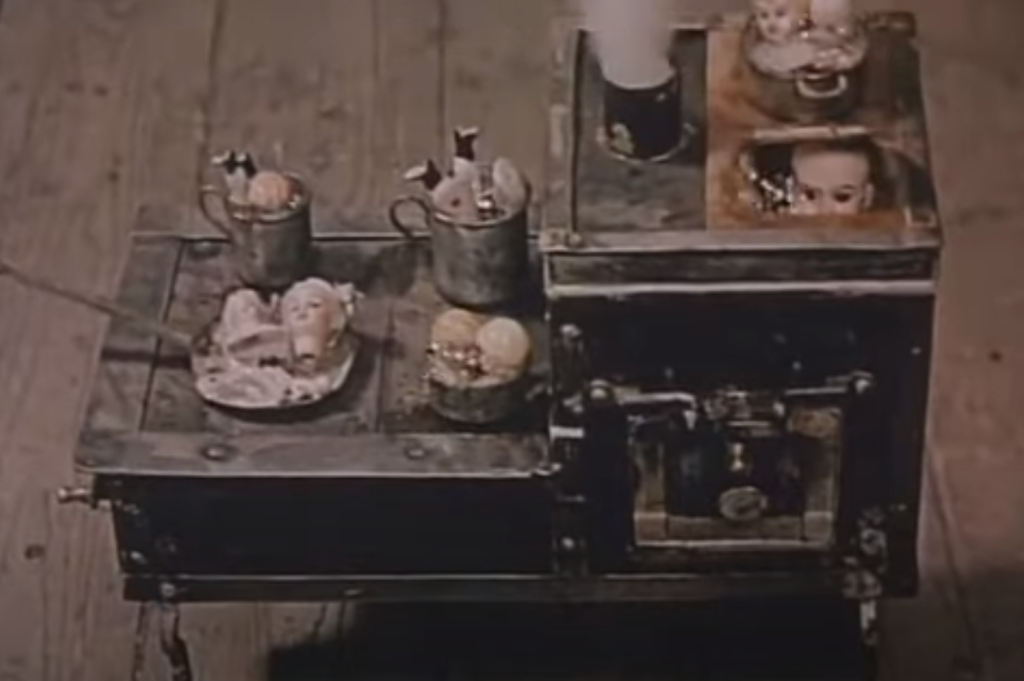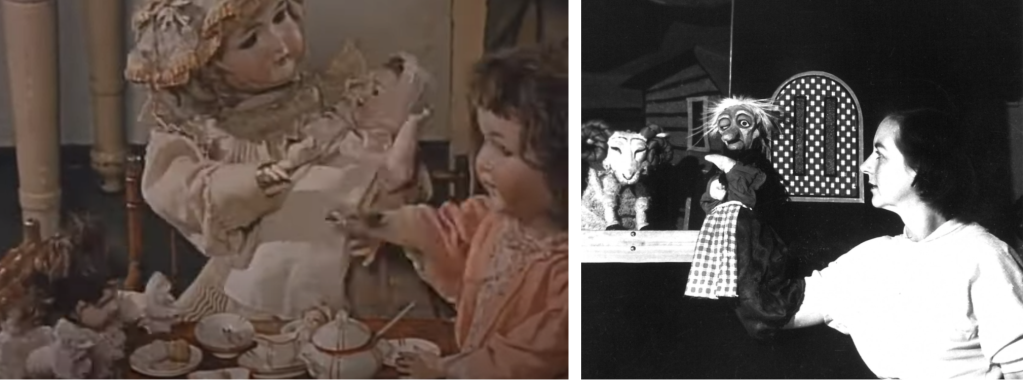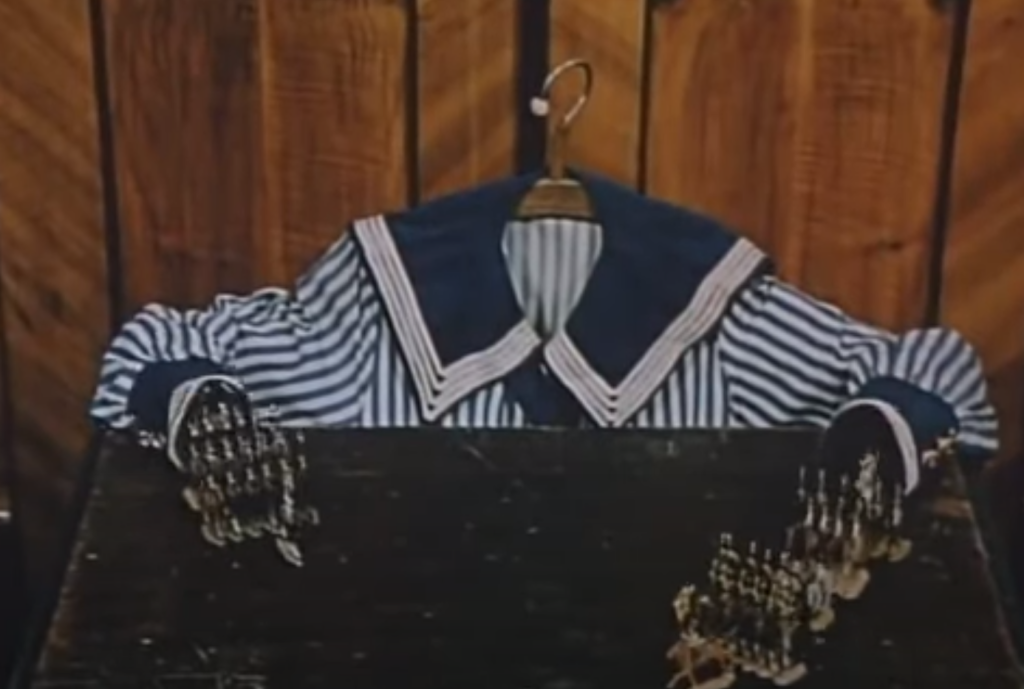As Laura Ivins-Hulley points out, however, performance through stop motion “carries a paradoxical indexality: the puppet tangibly exists outside the film, but its movement does not” (2008, p. 61).

“Bring life to everyday obejects.”Švankmajer’s use of stop-motion animation in his filming technique is similar to the way children manipulate dolls during their childhood.Children make an emotional investment in dolls.

I think there is a very strong sense of theater in Jan Švankmajer’s work, which is a kind of combination of puppetry and animation.
Stage setting

Similarities
In terms of scene composition, Jan’s films and plays have much in common in that they are more oriented towards flat composition rather than spatialization.
The visual center is usually placed in the middle of the scene and there aren’t really many props in the scene, but they all interact and connect with the characters.
Differences
There is a significant difference between film and puppetry: puppetry is real-time, is able to interact with the audience in a specific period of time, and the puppetry has a spatial and temporal nature; while the film has the characteristics of being recorded, is a visual form through the double role of post-production editing and the language of the camera in order to achieve the purpose.
So we see very many close-ups in jabberwoky, as well as stop-motion animation where the puppet’s movements are actually created in post by changing the frame rate.
Movement
Alan Cholodenko distinguishes two uses of the term ‘animation’ – in one sense, as the mechanical simulation of motion in animated film; in another as the animistic or magical notion of endowing something with life; that is, “transforming the inanimate into the animate” (1991, p.16).

Similarities
The similarity between the two is that puppetry and stop-motion animation are both about the control of an inanimate object, and both are a way of making them take on living characteristics.
Differences
I think Jan Svankmajer’s work gives a lot of symbolic meaning to these puppets or obejects, which are actually aids to his storyline or what he wants to convey. Puppetry itself is a pure and direct simulation of people or objects, which may have their own personalities and stories, but there is no symbolism in them.
Character Design

Due to the difference in the nature of the medium between film and puppetry, a lot of other objects are actually used in his work to refer to dolls, and this is where the difference between film and puppetry comes in, even though both present dynamics through the control of the objects, I would argue that the film would have a higher degree of freedom than puppetry when it comes to the use of objects, and this has a lot to do with editing as well.
”By relating this idea to other kinds of animated figures we can turn to Steve Tillis, who coined the term “media figure” to encompass characters created by stop motion, cell animation or CGI.“
Media&Parasocial relationship
According to Tillis, media figures “share with puppetry the crucial trait of presenting characters through a site of signification other than actual living beings” (2001, p.175). They become signifiers for something outside of themselves. What lies outside themselves is a notion of self; without human investment they are empty representations. Thus the doll, puppet, effigy, or media figure is a signifier for an “other self:” it is empty of soul, but when we animate it with movement and therefore character, we fill it with meaning. Stop motion figures and puppetry alike appear to stand as signifiers; their very point is that they are not living but instead are objects used to signify otherness or emptiness.
Puppets&Alter ego
An alter ego (Latin for “other I”) means an alternate self, which is believed to be distinct from a person’s normal or true original personality. Finding one’s alter ego will require finding one’s other self, one with a different personality.
There is a strong presence of puppetry components in ‘Jabberwocky,’ which corresponds to Jan vankmajer’s early experiences studying puppetry. Furthermore, I feel that the ‘childhood’ vision is a physical embodiment of vankmajer’s alter ego.

In this scene, the naval uniform is an expression of status and a stereotypical social expectation of male children that they must be brave, valiant and militant. Even their toys are part of their characterisation, with toy soldiers appearing from either side of his sleeves, seeming to represent the two camps, an antagonistic mood.This scene is similar with the experience in Jan‘s childhood.